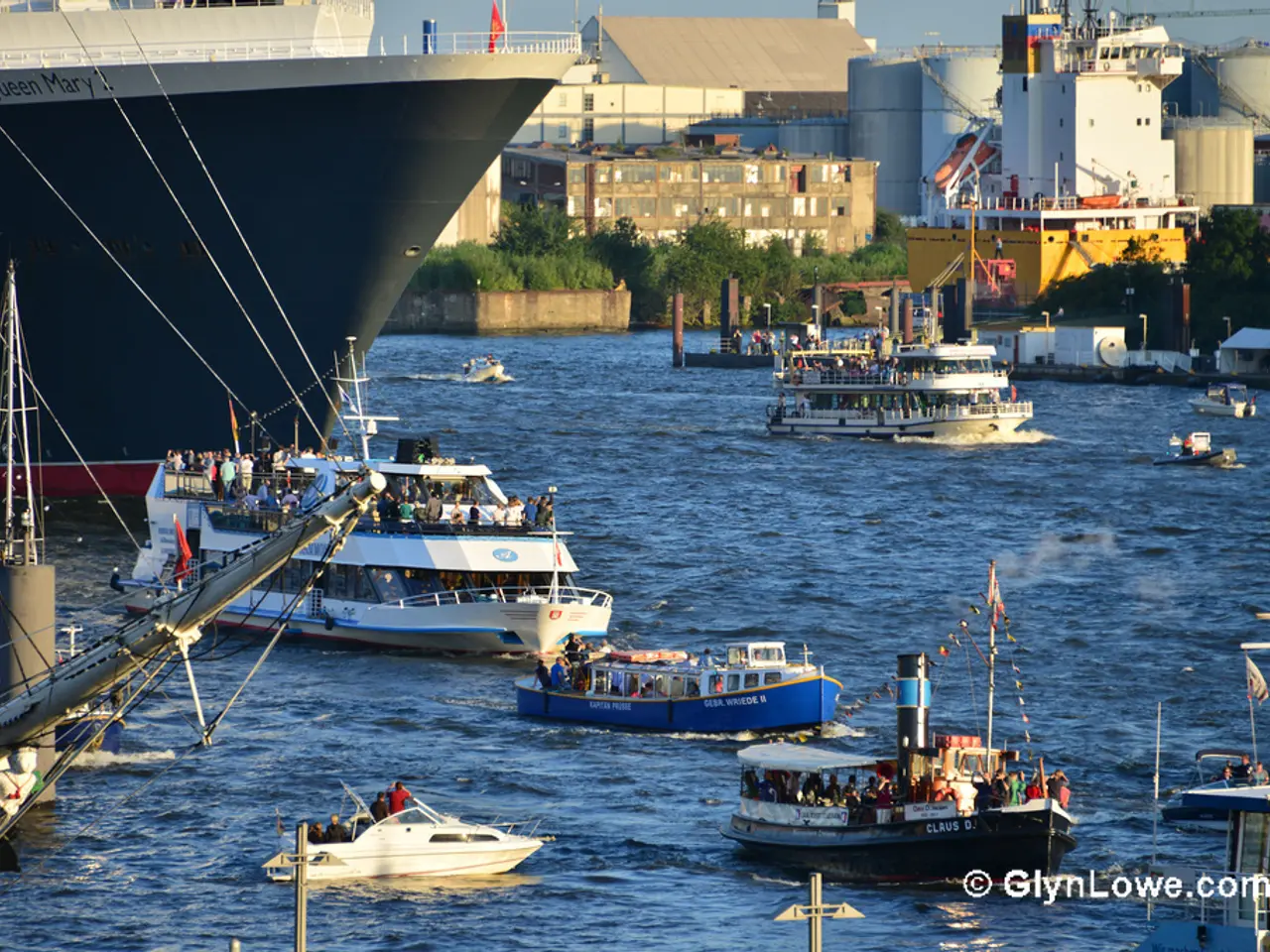Top Six Bank Heights of Discovered Maritime Treasures
Shipwrecks, buried treasures of history, are governed by a complex web of international, national, and bilateral laws. These legal frameworks aim to balance the interests of treasure hunters, private companies, nations claiming heritage, archaeologists, and international heritage organizations.
The United Nations Convention on the Law of the Sea (UNCLOS) is the primary international legal framework for the world’s oceans. Articles 149 and 303 specifically address underwater cultural heritage, requiring states to protect such heritage and to cooperate for their preservation. However, UNCLOS does not resolve issues of ownership outright, leaving much to national legislation and international negotiations.
The UNESCO Convention on the Protection of the Underwater Cultural Heritage (2001) provides detailed guidelines for the in situ preservation of underwater cultural heritage, emphasizing that commercial exploitation is incompatible with proper heritage management. States party to the Convention are encouraged to cooperate in protecting shipwrecks and their artifacts, focusing on archaeological best practices and scientific access.
Many disputes are resolved through bilateral agreements between countries, especially when a shipwreck is found in international waters or in the territorial waters of a third country. A notable example is the ongoing dispute over the San José galleon, sunk in 1708, between Spain and Colombia, each asserting rights based on heritage and territorial claims.
National legislation also plays a significant role in shipwreck ownership and preservation. For instance, the Sunken Military Craft Act (SMCA) in the United States bars salvage rights or awards for claims involving foreign sunken military vessels without explicit permission from the flag state.
The preservation of shipwrecks is guided by archaeological best practices, as promoted by UNESCO, which call for in situ preservation whenever possible, careful documentation, and non-commercial recovery. Disturbing shipwrecks that serve as war graves raises additional ethical questions.
Many nations prioritize the conservation and public display of shipwreck artifacts in dedicated museums, combining preservation with educational value. However, the rules regarding antiquities found in shipwrecks are complex and controversial, and disputes are common.
The rights to shipwrecks are frequently disputed, especially when commercial salvors, national governments, and international heritage bodies all assert interests. The San José case exemplifies how such disputes can span decades and involve multiple nations and private entities.
Not all states are party to relevant conventions, and enforcement of international norms remains inconsistent. Salvage law (maritime law governing the recovery of shipwrecks) sometimes conflicts with heritage preservation objectives, leading to prolonged litigation.
Table: Shipwreck Artifact Ownership and Preservation
| Legal Framework | Key Provision | Example/Application | |----------------------------|-----------------------------------------------------------|----------------------------------------------| | UNCLOS | Obligation to protect underwater cultural heritage | Sets general principle, specifics vary | | UNESCO 2001 Convention | Prohibits commercial exploitation; encourages cooperation | Guides archaeological best practices | | National Laws (e.g., SMCA) | Often declare state ownership; restrict salvage rights | France vs. GME over La Trinite[1] | | Bilateral Agreements | Resolve specific disputes between nations | Spain–Colombia negotiations over San José[2] |
In conclusion, current international laws—primarily UNCLOS and the UNESCO Convention—aim to prioritize heritage preservation and scientific study over commercial salvage, but enforcement and application remain fragmented. National sovereignty, especially over historic military vessels, often trumps salvage claims, and ethical considerations increasingly influence policy and practice. Disputes are common and typically resolved through a mix of litigation, negotiation, and diplomacy, with the balance between preservation, ownership, and commercial interests remaining a global challenge.
Examples of significant shipwrecks include the Nanhai No. 1, discovered off Yangjiang, China, an intact 100-foot-long merchant vessel from the 1100s, and the Belitung Shipwreck, discovered in the Java Sea off Belitung Island, Indonesia, dating back to around the 7th or 8th century. The San José's treasure is estimated to be worth from a few billion dollars to over $20 billion, and its ownership is contested among various parties. The Palmwood Wreck, discovered off the Netherlands, contains riches from around the world and insights into the life of 17th century elites. The Arab dhow, discovered in 1998, is filled with more than 60,000 handmade pieces of Tang dynasty gold, silver, and ceramics. The shipwreck known as the SS Central America, discovered in 1989, contained three tons of gold. The Bom Jesus, discovered off the southern coast of Namibia in 2008, contained over 2,000 coins, thousands of artifacts, and more than 100 elephant tusks. The Spanish naval galleon San Jose, sunk in 1708, is often called the world's richest shipwreck, carrying up to 200 tons of gold, silver, and uncut gemstones. The Santo Cristo de Burgos, a Spanish galleon believed to have wrecked on Oregon’s coast in the 17th century, included costly Chinese silk and porcelain. The ceramics found in the Arab dhow provide a snapshot of the Changsha ceramics industry, the Tang dynasty, and silk road trade.
- Shipwrecks, hidden gems of cultural heritage, are subject to a web of international, national, and bilateral laws, balancing the interests of treasure hunters, nations, archaeologists, and heritage organizations.
- The United Nations Convention on the Law of the Sea (UNCLOS), the primary international legal framework for the world’s oceans, addresses underwater cultural heritage.
- Articles 149 and 303 in UNCLOS require states to protect underwater cultural heritage and cooperate for its preservation, but ownership issues remain unresolved.
- The UNESCO Convention on the Protection of the Underwater Cultural Heritage (2001) emphasizes in situ preservation and discourages commercial exploitation.
- Disputes over shipwrecks are often resolved through bilateral agreements between countries, especially when found in international or third-party territorial waters.
- National legislation, like the Sunken Military Craft Act (SMCA) in the United States, declares state ownership and restricts salvage rights.
- Archaeological best practices, as promoted by UNESCO, prioritize in situ preservation, careful documentation, and non-commercial recovery.
- Disrupting shipwrecks serving as war graves raises ethical questions, especially regarding conservation and public display in museums.
- Many nations establish museums dedicated to shipwreck artifacts, combining preservation with educational value.
- Rules regarding antiquities found in shipwrecks are complex and disputes are common.
- Rights to shipwrecks are frequently challenged when commercial salvors, national governments, and international heritage bodies all assert interests.
- Enforcement and application of international laws remain inconsistent, with salvage law sometimes conflicting with heritage preservation objectives.
- Examples of significant shipwrecks include the Nanhai No. 1 and the Belitung Shipwreck, providing insights into history and life during their respective eras.
- The San José's treasure is estimated to be worth billions, making it one of the world's richest shipwrecks.
- The Palmwood Wreck contains riches from around the world and offers insights into 17th-century elites' lives.
- The Arab dhow contains Tang dynasty gold, silver, and ceramics, offering a glimpse into the Changsha ceramics industry, the Tang dynasty, and the silk road trade.
- The SS Central America, discovered in 1989, contained three tons of gold.
- The Bom Jesus, discovered off Namibia in 2008, contained over 2,000 coins, artifacts, and over 100 elephant tusks.
- The Spanish naval galleon San Jose, sunk in 1708, is often called the world's richest shipwreck, carrying up to 200 tons of gold, silver, and uncut gemstones.
- The Santo Cristo de Burgos, a Spanish galleon believed to have wrecked on Oregon’s coast in the 17th century, carried costly Chinese silk and porcelain.
- Developments in adventure travel likely impact shipwreck discovery, preservation, and tourism, fostering a niche market for cultural-travel and exploration.
- Sustainable travel programs prioritize budget-friendly options and educational experiences, ensuring responsible engagement with cultural heritage sites and resources.
- The value of shipwrecks extends beyond their financial worth, providing a unique blend of adventure, history, education, and cultural preservation.




